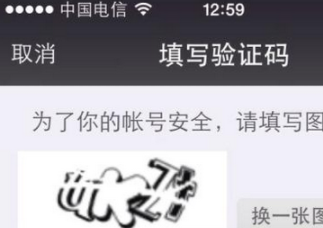本文实例为大家分享了Android实现微信支付统一下单的具体代码,供大家参考,具体内容如下
准备工作
申请微信开发者账号,添加应用及申请开通微信支付功能,如
查看开通流程
统一下单的接口文档:
查看接口
开发
①下载sdk:
②可以导入包
在build.gradle文件中,添加如下依赖即可:
|
1
2
3
|
dependencies { compile 'com.tencent.mm.opensdk:wechat-sdk-android-with-mta:+'} |
或
|
1
2
3
|
dependencies { compile 'com.tencent.mm.opensdk:wechat-sdk-android-without-mta:+'} |
③添加Android Manifest权限
|
1
2
3
4
5
|
<uses-permission android:name="android.permission.INTERNET"/> <uses-permission android:name="android.permission.ACCESS_NETWORK_STATE"/> <uses-permission android:name="android.permission.ACCESS_WIFI_STATE"/> <uses-permission android:name="android.permission.READ_PHONE_STATE"/> <uses-permission android:name="android.permission.WRITE_EXTERNAL_STORAGE"/> |
调用统一下单接口
1.务必提交必须的字段:appid,body,mch_id,nonce_str,notify_url, out_trade_no,spbill_create_ip,total_fee,trade_type,sign(都是小写);提交到微信接口时以xml格式提交
2.sign为前面提交的参数按照参数名ASCII码从小到大排序签名拼接起来然后进行MD5运算,再将得到的字符串所有字符转换为大写得到的,如签名生成算法
3.参与生成sign的key为商户账号的密钥,key设置路径如下:微信商户平台(pay.weixin.qq.com)–>账户设置–>API安全–>密钥设置
下面是具体代码(如若查看你的sign生成及提交的xml是否正确可以点击如下:签名生成工具)
|
1
2
3
4
5
6
7
8
9
10
11
12
13
14
|
//拼接字段,顺序不能变 String A = "appid=你的appID" + "&body=jinshi" + "&mch_id=你的商户号" + "&nonce_str=" + nonce_str + "¬ify_url=http://www.szgsip.com/" + "&out_trade_no=" + trade_no + "&spbill_create_ip=192.168.1.1" + "&total_fee=1" + "&trade_type=APP"; String key = "你的密钥"; String temp = A + "&key=" + key; // 生成sign String sign = MD5.getMessageDigest(temp.getBytes()).toUpperCase(); |
接下来提交到微信下单的接口上
|
1
2
3
4
5
6
7
8
9
10
11
12
13
14
15
16
17
18
19
20
21
22
23
24
25
26
27
28
29
30
31
32
33
34
35
36
37
38
39
40
41
42
43
44
45
46
47
48
49
50
51
52
53
54
55
56
57
58
59
60
61
62
63
64
65
66
67
68
69
70
71
|
private void httpThreadxml() { //组建xml数据 //拼接字段,顺序不能变 xml.append("<xml>\n"); xml.append("<appid>你的appID</appid>\n"); xml.append("<body>jinshi</body>\n"); xml.append("<mch_id>你的商户号</mch_id>\n"); xml.append("<nonce_str>" + nonce_str + "</nonce_str>\n"); xml.append("<notify_url>http://www.szgsip.com/</notify_url>\n"); xml.append("<out_trade_no>" + trade_no + "</out_trade_no>\n"); xml.append("<spbill_create_ip>192.168.1.1</spbill_create_ip>\n"); xml.append("<total_fee>1</total_fee>\n"); xml.append("<trade_type>APP</trade_type>\n"); xml.append("<sign>" + sign + "</sign>\n"); xml.append("</xml>"); try { final byte[] xmlbyte = xml.toString().getBytes("UTF-8"); System.out.println(xml); URL url = new URL("https://api.mch.weixin.qq.com/pay/unifiedorder"); final HttpURLConnection conn = (HttpURLConnection) url.openConnection(); conn.setConnectTimeout(5000); conn.setDoOutput(true);// 允许输出 conn.setDoInput(true); conn.setUseCaches(false);// 不使用缓存 conn.setRequestMethod("POST"); conn.setRequestProperty("Connection", "Keep-Alive");// 维持长连接 conn.setRequestProperty("Charset", "UTF-8"); conn.setRequestProperty("Content-Length", String.valueOf(xmlbyte.length)); conn.setRequestProperty("Content-Type", "text/xml; charset=UTF-8"); conn.setRequestProperty("X-ClientType", "2");//发送自定义的头信息 conn.getOutputStream().write(xmlbyte); conn.getOutputStream().flush(); conn.getOutputStream().close(); if (conn.getResponseCode() != 200) throw new RuntimeException("请求url失败"); InputStream is = conn.getInputStream();// 获取返回数据 // 使用输出流来输出字符(可选) ByteArrayOutputStream out = new ByteArrayOutputStream(); byte[] buf = new byte[1024]; int len; while ((len = is.read(buf)) != -1) { out.write(buf, 0, len); } String string = out.toString("UTF-8"); System.out.println(string); Log.e(" 微信返回数据 ", " --- " + string); out.close(); } catch (Exception e) { System.out.println(e); }} |
注意在调用上面的方法,一定要在子线程中进行
|
1
2
3
4
5
6
|
new Thread(new Runnable() { @Override public void run() { httpThreadxml(); } }).start(); |
以上就是本文的全部内容,希望对大家的学习有所帮助,也希望大家多多支持服务器之家。
原文链接:https://blog.csdn.net/Dr_abandon/article/details/80695156














